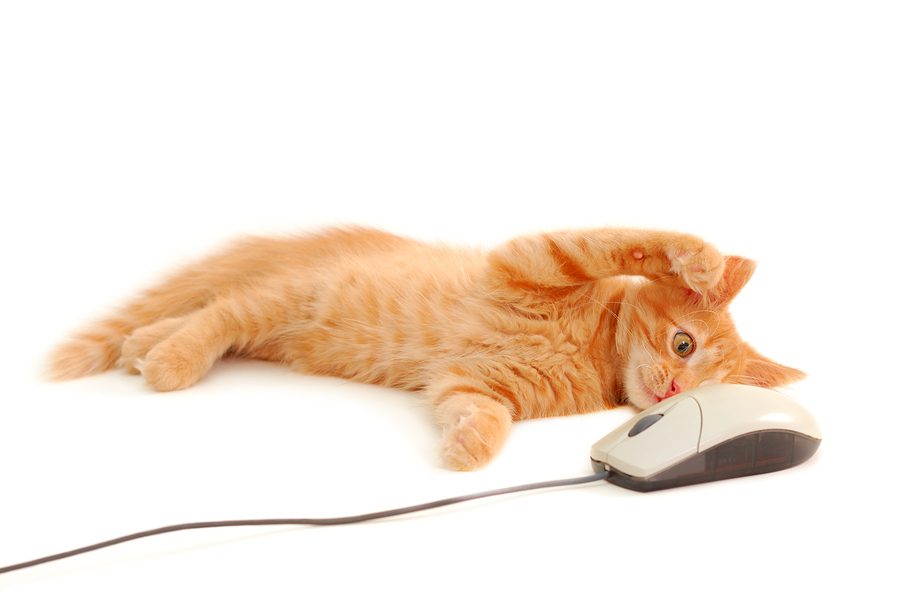
Whether it’s the first thing you check in the morning or the last thing you look at each night (or both), email is something most of us have in our lives. So perhaps it’s not surprising that we can become a little bit immune to what’s landing in our inboxes.
Subject lines and messages can get lost in a crowded inbox, which means you have to work harder to break through to subscribers when it comes to your own email marketing.
To get a better idea of why crafting an engaging email newsletter is especially important today, we’ll break down what you’re up against:
- Average of 269 billion emails sent per day in 2017, compared to 247 billion in 2009
- Office workers receive about 121 emails a day and send out 40 business emails per day
- 49.7 percent of email is spam
People receive an ever-increasing number of emails each day, and that trend isn’t going to stop. That means you’re tasked with creating an email newsletter that not only stands out from the rest, but also is engaging enough to boost your open and click-through rates.
Up for the mission? We’ve put together best practices guide to help you build an attention-grabbing email newsletter.
What’s a Good Subject Line?
The subject line is the first thing subscribers will see. So it better stand out if you want them to read your email.
It tells a reader what can be expected if they open the message and is often the deciding factor between an open or a deleted, unread email.
Here are some weighty stats that show just how important it is to think about your subject line:
- 33% of email recipients open emails based on the subject line
- Personalized subject lines are 22.2% more likely to be opened than those that aren’t personalized
- Emails without subject lines are opened 8 percent more often than those with one (more on that below)
It might seem a little confusing that emails without a subject line can earn more opens than one with. Didn’t we just get finished saying how important they are for your emails? We attribute that to people’s curiosity. We wouldn’t suggest using this technique for every email (namely because it looks pretty spammy), but it could be something you try out with your A/B testing to see how subscribers respond.
Less is More
When it comes to the length of your subject line, you should try to convey your message as concisely as possible. Most people view their email on mobile phones nowadays, which means there’s less real estate and they’ll see less of the subject line on smaller screens compared to a desktop view.
The best read rates are from subject lines with 61 to 70 characters — and ones with one or two words have higher open rates. To give you a look at that range, this sentence is 64 characters.
Be sure to preview your subject lines on both desktop and mobile views so you know what your subscriber will see. Even if the message is cut off, they need to be able to get the general idea of what the email is about. If it isn’t immediately clear, it’s time to go back to the subject line drawing board.
Capture Their Attention

There isn’t just one approach to catching your subscribers’ eyes as they’re scrolling through their inbox.
So what will make people want to open your newsletter? Try creating a subject line that creates one or more of these reactions: curiosity (like with the no-subject-line example), urgency, personalization, offers, and/or interest.
To build curiosity, you need to create a little mystery. We aren’t talking about clickbait-style subject lines. Instead, think subject lines like, “Top 5 Products You Didn’t Know You Needed.” Give them enough to pique their interest and avoid the spam folder, while holding a little back to make them want more. Don’t be scared to get creative with your subject lines.
Creating an urgent subject line is one of the easier techniques. For example, “Time Is Running Out!” lets them know the message is timely and requires their attention. Just be sure you don’t take advantage of this option. It loses its power and credibility if every message you send “must be read now.”
One method you can use with any type of subject line is personalization. You don’t have to do it with every email — and probably wouldn’t want to — but you can include the subscriber’s first name to personalize the subject line. An example could be, “John, We Know You Won’t Want to Miss This Deal.”
We all love a good sale or discount, so use that your advantage and showcase an offer in the subject line. Some examples are “You’ll Love This 15% Discount” or “Don’t Miss Our Best Deals of the Year.” This is one of the most popular subject line methods, and for good reason.
To figure out what’s going to interest your subscribers, you need to know them — another aspect of personalization. Use your customer data and other feedback you’ve collected to give them a tailored experience starting with the subject line. That’s where segmented lists come into play, as well.
Consider using an emoji in your subject line, too. This can be a fun way to use something visual to catch someone’s attention.
Good vs. Bad Words
Your email subject line shouldn’t just be able to pass the spam test with your email service provider. While doing a spam check is a good starting point, it isn’t the deciding factor for what will and won’t work.
There are several words that might not raise a red flag with your provider but will with your subscribers. We suggest steering clear of these words when possible because they’ve been proven to negatively impact the chances of getting an open:
- Quick
- Meeting
- Remember
- Chat
So what words should you use? Try these instead to catch their attention:
- Urgent
- Preview
- Today
- Special
- Alert
- Free
Again, try different words and phrases, and check your analytics to see which ones perform the best. If in doubt, ask yourself if you would read the email if it popped up in your inbox. The more creative, the better.
How Long Should the Email Be?

An email newsletter needs to be long enough to get your message across, without becoming a digital novel. So how do you find that sweet spot where people find your message manageable to read?
You catch their attention in the first 10 to 15 seconds.
But even after you’ve got their attention, don’t expect them to stay around too much longer. The average person spends 51 seconds reading an email newsletter. And with the normal person reading at a rate of 200 wpm, that 51 seconds equates to them reading about 170 words. (We’ll accept a slow clap for our math skills.)
That means you have a few short paragraphs to get your point across before they’re on to the next email. Avoid lengthy blocks of text to keep their focus, and include things like pullouts, CTAs, bolded text and bullet points to make it an easier read for them. You don’t want them to get lost in a sea of black text.
The bottom line is that your email newsletter should be as long as it needs to be. Don’t use 20 words if you can use 10, but don’t cut out important content and confuse people to reduce the word count. Be precise as possible, and if has to be longer, use images and other visual components to help break up the text.
Also, include links for more information when you can. That will help improve your click-through rate and give valuable info to the subscribers who actually want it.
What’s the Best Newsletter Format?
Templates or made-from-scratch designs? Heavy on the text or on the images? Broken up in sections or one large body? There are seemingly endless options when it comes to the format of your email, but don’t let that overwhelm you.
If coding and design work aren’t your thing, you may want to start with a pre-made template. There are plenty of ways to customize templates, like adding your brand’s colors, logo, images, and overall style. They can be a good starting point to get the process started. Robly has tons of pre-designed templates to help you get started quickly.
The type of newsletter you’re sending will also help decide what format will work best. For example, an email sharing multiple stories could include different sections of content with a photo for each. Or, an announcement might have a colored background or border with the information front and center.
No matter the look and feel you choose, there are some important things to remember:
- Keep the design simple so the message is front and center. You don’t want it to looked clutter and difficult to read.
- Make sure you use a responsive design. People use everything from computers to tablets and smartphones, and you want your message to work for them all.
- Add a header to the top of your message. This can be your logo or a headline that lets them know about the great content they’re about to read. That also helps build a hierarchy to give your newsletter a good flow. Think about it in newspaper terms: What do you want them to see above the fold? Or in this case, above the scroll.
- Don’t use a large image, which can result in slow load times or not showing up at all. Make sure to use a web-res version of the photo.
- Never use attachments. Period. There’s nothing you need to attach that you can’t create a link for.
Need a little design inspiration? You can look through some of Robly’s templates or look at some eye-catching examples online.
How Many Topics Should You Include?

We all have a hard time focusing when dozens of things are thrown our way. That principle rings true for your email newsletter, too. If you’re trying to convey information on a variety of topics, with multiple CTAs, you’re going to lose some people along the way. And they might not come back.
The best newsletters have one purpose. That could be to inform customers about an update, share event info or let them know about a product release.
You need to go into the campaign having a goal of what you want to convey and make sure all of the components support it and tie in together — like your CTA, subject line, content, byline, and images.
That’s not to say you can’t share multiple topics like you would with a daily news email. You’re still focusing on one purpose with that type of newsletter: providing the current events.
What you don’t want is an email that has different goals, like sharing holiday recipes along with a product update. That’s only going to confuse people. If you have multiple topics to share, create multiple emails. It’s a simple fix.
A good rule of thumb is to think about how you’re going to describe the email’s content in your subject line. If you can’t put your message into one solid phrase, you’re probably trying to cram too many topics into one newsletter.
Should Your Emails Be Promotional?

The whole point of sending email newsletters is to market your brand, right? Not quite. While that might be true from your point of view, in reality, your messages better have a higher purpose if you want subscribers to engage with them.
The email needs to provide valuable information that the subscriber cares about — not some sales materials you’re trying to shove down their throats. Today’s consumers are able to spot a promotion a mile away, so tread lightly with how (and how often) you talk about your company.
Stick with email content that is 90 percent informational and helpful, with 10 percent that’s promotional, to keep a healthy balance. Even when you do incorporate promotional text, keep it light, and never try to force a sale. That will be a major turnoff for the consumer.
How Often Should You Send Emails?
One of the main debates with email marketers is how often they should send their subscribers emails. We get that you don’t want to send too many and scare them away. But at the same time, you also want to make sure they don’t forget about you.
Luckily, there are concrete ways to figure out what works best for your lists.
One of the easiest options is to ask your subscribers how many emails they want to receive when they first sign up. Do they want something daily, weekly, monthly? That pretty much takes the guesswork out of how many to send and helps you personalize their experience even more. Win!
Another option is to compare your analytics to see how many emails is the right number for you. Does sending three a week lower your open rate and increase your unsubscribes, compared to sending two? Or, does the increase help boost your click-throughs? You’ll only be able to answer that once you’ve given it a try. Don’t worry about works for everyone else. Run your own tests and experiments to see what works best for you.
It also helps to create (and stick to) a schedule with your newsletters. Maybe you always send them out Tuesday at 10 a.m. That will let subscribers know when to expect the message so they can be on the lookout for it. You’ll build anticipation and improve your rates.
Don’t be scared to send more emails. You might be surprised to see how many subscribers actually want to engage with more newsletters from you. Just be sure you’re sending them valuable content and not sending more just for the sake of doing it.
When Is the Best Time to Send?
The answer to this question is, “It depends.” We’re sure you’ve heard that response a time or two, but it couldn’t be truer when it comes to send times.
The exact day that’s best for you to send emails depends on your specific audience. Are they night owls who don’t check their emails until mid-day, or are they business professionals who scroll through their inbox before the sun comes up?
While the exact answer varies, there are some findings about the most popular days and times to give you an idea of what’s working for other brands:
- Tuesday is the best day to send emails, while Wednesday came in second in several studies.
- If you’re sending two emails per week, Thursday is the best day to send your second newsletter.
- The best times to send (from top to bottom) are 10 a.m., 8 p.m., 2 p.m., and 6 a.m., local time.
Weekends are typically the worst time to send, although of course that can be the best time for other companies. If you’re sending emails across multiple time zones, try to pick centralized times that fall around the top send times.
Want some help with figuring out the day and time to send your emails? We have a special feature called Robly A.I. that will send your emails one at a time so they reach each subscriber at the perfect moment. Then you don’t have to worry about figuring out the best times.
Bonus Tips and Techniques
We’ve covered most of the main components of creating a newsletter, but there are some important smaller details you won’t want to forget.
- Each one of your images should have alt text because a good many people don’t have their images enabled in their emails. The alt text will show up if the images don’t load, and that’s especially important if the CTA is an image. You don’t want them to miss that.
- Also, be sure to provide a hyperlink to an HTML version of the newsletter. Give the consumer as many possible ways to view your email so they can do what works best for them.
- Remember to include an unsubscribe button in all of your emails. Your email service provider should add this automatically, and it will help improve your rates.
- Don’t forget to include your social media icons and a way for the subscriber to share your email with others. A good place for all of that is at the bottom below your signature.
- We didn’t really cover bylines in the other sections, but make sure yours clearly lets the reader know who the message is from. It could be your company name, a person’s name, or a combination of the two.
- You might be surprised by this last tip, but we see several companies forget one of the most basic email components: contact information. Best put at the bottom of the email, the contact information is what allows them to interact with you and give feedback. At minimum, you need to include an email address, but it’s much better to include a person’s name with the address. It adds a personal touch to the message and helps build a good relationship with them.
Fine-Tune Your Emails

There are dozens of different options when it comes to crafting an engaging email newsletter — as we’ve covered in this guide — and what works for one company might not for another. And that’s okay.
It takes time and some tweaking to tailor your campaigns for the best results. That’s why at Robly, we offer our users A/B testing, so you can compare results for one subject line versus another. Or, test different bylines or maybe the email’s design. Just be sure to only test one component at a time, or you won’t get clear results.
Even when you find what works, don’t let your techniques become stale. Email marketing is constantly evolving, so be sure to keep up by cleaning your lists, subscribing to other companies’ newsletters to get ideas, track your campaign results, and listen to your subscribers’ feedback.
Building a successful email newsletter isn’t rocket science, but it does require some effort to make all of the components work together so you can start enjoying increased engagement rates.
Let us know if these email best practices are helpful – and if you have other tips, please tell us in the comments!
Lauren Dowdle is an award-winning writer and magazine editor based in Nashville, Tenn. Her nearly decade-long writing career has covered everything from landscaping to marketing.

